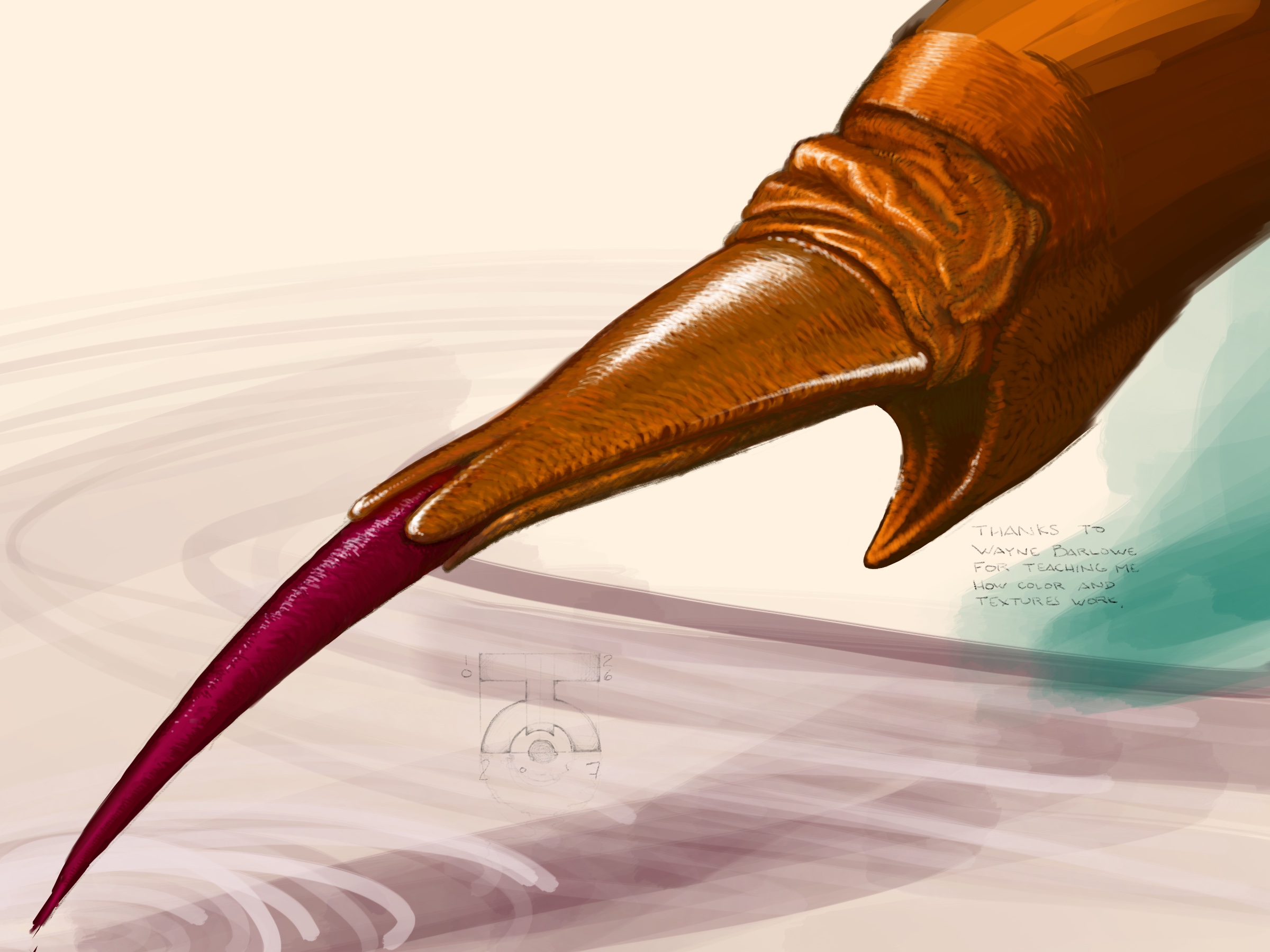A lot of you will probably recognize this painting. It’s my copy of one of Wayne Barlowe’s paintings from his seminal speculative zoölogy book, Expedition. The book is a prize possession of mine, as it is, I suspect, of anyone who has it in their library.
Along with Dougal Dixon and Gary Marsh’s After Man, they form the core of the genre, not only because of their creative and thorough exploration of alien ecosystems (Barlowe’s distant in space, Dixon and Marsh’s distant in time), but because of their vibrant illustrations. Both draw on the naturalist traditions of the 18th and 19th centuries to lend both a solidity to their subject and the appearance of a cool objectivity; like these are things that any of us would see, were we able to look.

A longstanding tradition, now deprecated in art schools, is to copy paintings of respected masters. When I was a student, I shared my professors’ suspicion of the practice. In the European tradition, for centuries, a student would copy painting after painting before being allowed so much as a charcoal swipe of still life, never mind a life drawing of a model. It was a practice designed to reduce innovation in a world philosophically dominated by its imagined past.
In contrast, still lifes and models are incredibly powerful teaching tools. They teach you to see, rather than to imagine. Then, with your newfound eyes, you can look at the vast richness of the universe instead of the surprisingly limited scope of the human imagination, bound as it is by prejudice and finite experience.
But it turns out you can gain a lot by applying those same powers of observation back to the work of artists whose work you really respect. So, above, you can see my copy of Wayne Barlowe’s Forest Sliders from the temperate forests of Darwin IV. This is just a detail; I’m trying to understand how he casts light on natural surfaces. The original painting tells a story in the way that my copy doesn’t, with a parent leading its developing offspring to a stream to drink. My copy here is simply about light and texture.

